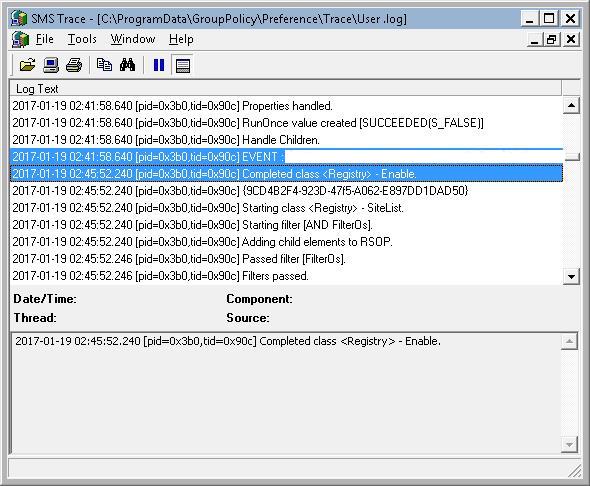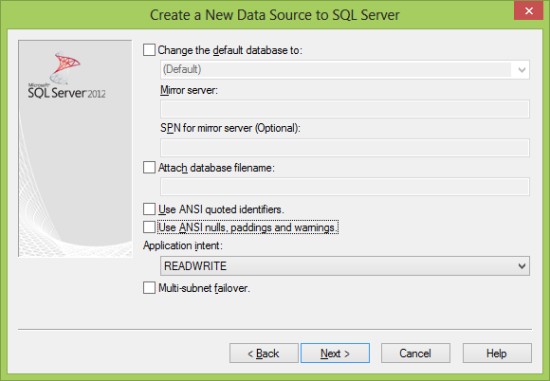
- Dynamics gp slow login on terminal server windows 2012 r2 install#
- Dynamics gp slow login on terminal server windows 2012 r2 drivers#
- Dynamics gp slow login on terminal server windows 2012 r2 update#
- Dynamics gp slow login on terminal server windows 2012 r2 software#
- Dynamics gp slow login on terminal server windows 2012 r2 windows 7#
This has occurred at only two places so far, others run with no issues. The only things slightly different from our norm is that DNS in this case is done thru a router and not an actual server. However, this is still a long time to get an initial connection to SQL Server. Turning off the LLMNR protocol did cut the initial connection time in about half to 21 seconds. I did find the following article on a microsoft forum:
Dynamics gp slow login on terminal server windows 2012 r2 windows 7#
Both the workstation and the server are decent machines running Windows 7 Pro, Core 2 Duo 3.16 Ghz with 4 gig of Ram. After the initial connection is made the connection is pooled and the application responds normally. We thought it might be a DNS issue but its just as slow using a TCP/IP connection. It was taking about 41 seconds to establish a connection to the server via named pipes. I wrote a test application to verify where the slowdown occurs and it is on the first SQLConnection.Open statement. If it's anything larger then a few hundred MB's then it's time to put on your detective hat.I have run into a situation with a C# application installed at two sites where the initial connection to SQL Server is extremely slow. Maybe it could be scripted.ĭo you wonder, after reading all this, if you too have the same problem? Go to %SystemRoot%\System32\config and check the size of the file DEFAULT. I suspect that one just has to do the tasks above at intervals.
Dynamics gp slow login on terminal server windows 2012 r2 drivers#
Just use normal drivers on a shared print server, without any kind of "easy" discovery methods or dynamic print targets.
Dynamics gp slow login on terminal server windows 2012 r2 install#
Do not install full printer application packages on a terminal server. It slows down the spooler, as it has to trigger a new process to start every time you so much as look at the printer inside Windows. If using HP UPD in a managed environment - install the group policy templates from HP Managed Print Administration and disable all the extra "features", like the popups about toner remaining and super deals on new toners and such. Boot a Windows PE image and compress the registry. 
Dynamics gp slow login on terminal server windows 2012 r2 software#
Clean print software from HKEY_USERS\.DEFAULT\Software and printer connections from HKEY_USERS\.DEFAULT\Printers.  Stop Windows from deleting and re-creating printer connections every time a user logs off (or disconnects) by setting RemovePrintersAtLogoff=dword:00000000 in the key HKLM\SOFTWARE\Microsoft\Windows NT\CurrentVersion\Print\Providers\Client Side Rendering Print Provider. Clean out all the junk from HKLM\SOFTWARE\Microsoft\Windows NT\CurrentVersion\Print\Providers\Client Side Rendering Print Provider. Set drivers to shared isolation mode, and change the print processor to winprint in hopes of stopping CSR from activating.
Stop Windows from deleting and re-creating printer connections every time a user logs off (or disconnects) by setting RemovePrintersAtLogoff=dword:00000000 in the key HKLM\SOFTWARE\Microsoft\Windows NT\CurrentVersion\Print\Providers\Client Side Rendering Print Provider. Clean out all the junk from HKLM\SOFTWARE\Microsoft\Windows NT\CurrentVersion\Print\Providers\Client Side Rendering Print Provider. Set drivers to shared isolation mode, and change the print processor to winprint in hopes of stopping CSR from activating. Dynamics gp slow login on terminal server windows 2012 r2 update#
Update the drivers (this stopped the HP driver from spamming the registry, Konica driver still sucks). Remove the driver packages that you don't need Keep the list of drivers as minimal as possible. Install MS hotfix 2778831 if you are running 2008 R2, and MS Hotfix 2871131 if you are running 2008 R2 SP1 or 2012 R2. In this specific situation the terminal servers had millions of entries inside the registry hive. Combine that with users who have every printer on the planet mapped to their userprofile, and you get a shitstorm of printer installation every time they log off. On a terminal server this can get disasterous, as they populate the same keys over and over and over inside HKEY_USERS\.DEFAULT\Printers, just with a different GUID each time. In this situation there was two suspects (which both are guilty) HP Universal Print Drivers and Konica Minolta Universal Driver.įor some reason both these drivers refuse to run in anything other than CSR mode (Client Side Rendering). This is an recurring issue when using horribly written print drivers. Long logon time when you establish an RD session to a Windows Server 2008 R2-based RD Session Host server if Printer Redirection is enabledĪnd run that FixIT to clean the registry. Increasingly large numbers of redirectedĭevices will exacerbate performance delays. Performance degradation is known to occur when 250 or more TS portsĮxist in the registry. Every RDP session can possiblyĬreate a new port, and every ended session means a new inactive port. Service creates a new port every time an RDP session is established,īut the ports are not always recycled. These inactive TS portsĪccumulate because the Remote Desktop Services Device Redirector Sessions, failure of printers to redirect, and slow server performanceĭue to registry bloat from all the ports. There are several issues that have been associated with a high number 
Please check Performance issues due to Inactive Terminal Server Ports In case it helped, will write an answer with what we talked.







 0 kommentar(er)
0 kommentar(er)
